funny animals
Magic — The Anthro-Folk
Posted by Mink on Thu 29 Feb 2024 - 02:36Recently there was a major announcement from the world Magic: The Gathering, the famous fantasy card game. “Welcome to Valley, the bucolic and vibrant home to the animalfolk of Bloomburrow, Magic‘s first all-animal plane. It’s a place where big adventures await even the smallest who are bold, inquisitive, and heroic, while those with more homespun and peaceable yearnings can enjoy the tranquil life… But peace is endangered in Valley as the delicate balance of nature is threatened, and the elemental calamity beasts and the Great-Night Owl imperil the lives of its inhabitants… The animalfolk will have to band together to defend their homes. Led by Mabel, a mousefolk mother and reluctant hero, a party will strike out to investigate what has befallen a neighboring town. Along the way, they’ll be joined by a remarkable companion from a faraway land.” Keep up with the Wizards of the Coast to find out more. As usual with Magic: The Gathering, the artwork for Bloomburrow is absolutely gorgeous.

image c. 2024 Wizards of the Coast
Retrospective review: 'Chicken Little'
Posted by crossaffliction on Wed 13 Apr 2016 - 22:42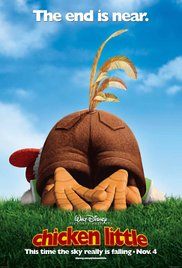 So, anyway, earlier this year, a movie came out called Zootopia. We, uh, might have mentioned it. Despite being anticipated, or even known, by just about nobody who wasn't a furry or, perhaps, a major Disney fan, the movie managed to become a rare hit at both the box office and with professional critics (though gathering up Flayrah reviews, the consensus was more in line with Metacritic's "good, but whatever" score, because furries, am I right?).
So, anyway, earlier this year, a movie came out called Zootopia. We, uh, might have mentioned it. Despite being anticipated, or even known, by just about nobody who wasn't a furry or, perhaps, a major Disney fan, the movie managed to become a rare hit at both the box office and with professional critics (though gathering up Flayrah reviews, the consensus was more in line with Metacritic's "good, but whatever" score, because furries, am I right?).
One thing that was repeatedly and pointedly not mentioned by anyone involved with the movie was another movie a little over a decade old, called Chicken Little. Lots of interviews, and even a semi-independently produced 45-minute making of documentary, all went on at length at how this Disney's first fully anthropomorphic animal world since Robin Hood, and the first set in the furry equivalent of a modern world, despite the fact that it, well, wasn't. Chicken Little became the animated equivalent of a "disappeared non-person" in some sci-fi dystopia.
Which makes it incredibly interesting, in a weird kind of way; in a company that mines its past productions for nostalgia like there is no tomorrow (only yesterday, repeated), Disney has gone out of its way to avoid reminding anyone this movie exists. And this is actually a fairly important movie in the history of the company; it was the first full length computer animated feature by Disney (and not Pixar). So, is it really that bad?
Yes. Yes it is really that bad.
'Sing' first teaser trailer
Posted by Fred on Tue 16 Feb 2016 - 12:29Here is the first teaser trailer for Illumination Entertainment’s Sing, from the studio that brought us two (so far) Despicable Me features and one (so far) Minions feature, and that is going to bring us The Secret Life of Pets.
Despicable Me, Minions, and The Secret Life of Pets are all set in the human world. Sing takes place in a totally anthro world, like Disney's Zootopia. Are any of us planning theater parties, like there are to see Zootopia, when Sing comes out on December 21, 2016?
Tunturu
Posted by Fred on Tue 19 Jan 2016 - 07:43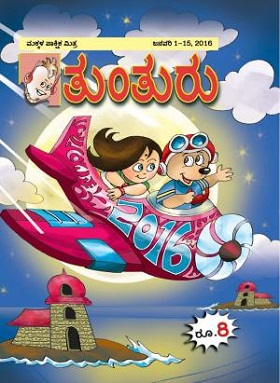 For the record, funny animals in Kannada (that’s Kannada the language, not Canada the country) can be found in Tunturu, a children’s magazine published since January 2000, originally bi-monthly but semi-monthly today.
For the record, funny animals in Kannada (that’s Kannada the language, not Canada the country) can be found in Tunturu, a children’s magazine published since January 2000, originally bi-monthly but semi-monthly today.
Tunturu has been able to carve for itself an identity of being the most sought-after children’s magazine across the age-groups of 5-14 in Karnataka.
If you don’t know where Karnataka is, you can look it up. Reportedly an English-language edition is coming soon.
It’s ₹8 an issue, but you can subscribe to it in America for $5.99 for three months.
And that's probably more about funny animals in Kannada than you want to know.
Fine Art? Funny Animals.
Posted by Mink on Mon 6 Apr 2015 - 01:36It’s interesting when full-fledged fine artists turn their attention to something more whimsical, like cartoon illustration. Such is the case with painter Richard D. Sweatt, who in addition to his gallery works has taken time to write and illustrate a softcover children’s book, Fuzzy Friends. “A story about a little girl that makes friends with the little animals from the nearby woods. Everyday the little Fuzzy Friends wait for the little girl to arrive home on the school bus to greet her. The little girl loves to play with her friends and at the same time learns some valuable lessons about making good choices when it comes to choosing friends.” Check it out over at Lulu.com, then check out Mr. Sweatt’s other fine art paintings at his Enjoygram site.
Captain Carrot 1982 series being digitally released by DC on ComiXology
Posted by STrRedWolf on Tue 23 Sep 2014 - 22:05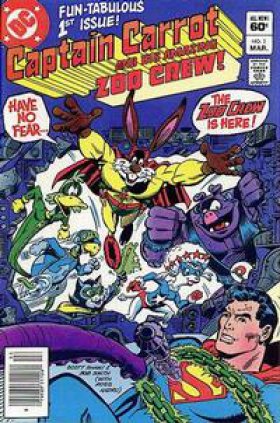 DC is doing a digital release of Captain Carrot And His Amazing Zoo Crew! this year. First issue was released in 1982... now rereleased August 19th, 2014!
DC is doing a digital release of Captain Carrot And His Amazing Zoo Crew! this year. First issue was released in 1982... now rereleased August 19th, 2014!
From Wikipedia:
Captain Carrot and His Amazing Zoo Crew! is a DC Comics comic book about a team of funny animal superheroes called the Zoo Crew. The characters first appeared in a special insert in The New Teen Titans #16 (February 1982),[1] followed by a series published from 1982 to 1983. The Zoo Crew characters were created by Roy Thomas and Scott Shaw!. Although the series, which was the last original funny animal property created by DC Comics, proved short-lived, it is still fondly remembered by many comic fans of its generation, and the characters appear occasionally in cameos in the mainstream DC Universe (this is made possible due to the existence of a "multiverse" in the DCU, which allows the Zoo Crew characters to exist on a parallel Earth).
Review: 'L'Extravagante Croisière de Lady Rozenbilt', by Pierre Gabus and Romuald Reutimann
Posted by Fred on Mon 1 Sep 2014 - 03:01This is a review of the original French edition. My thanks to Lex Nakashima for getting and loaning it to me.
The young Alfred Bigoodee is only an assistant when he embarks on the seaplane of Lady Rozenbilt, the fabulously rich woman with tastes as fantastic as they are dangerous. This voyage will forever change his life.
A complete story about the man who will become Captain Bigoodee, one of the most striking characters of the series District 14, the prize-winning series of the International Comics Festival of Angoulême. (French blurb; my translation)
The French publisher’s American subsidiary in Hollywood has published the English translation, The Fantastic Voyage of Lady Rozenbilt, almost simultaneously with the original edition, but has declined to send me a review copy; so this review is of the French edition alone.
This 124-page hardcover album starts out as a prequel, so to speak, of Pierre Gabus and Romuald Reutimann's District 14, Season 1, which I described in my review as:
a Ridley Scott Blade Runner megalopolis (Reutimann’s art convincingly portrays a huge but crumbling early 20th-century city) with Humphrey Bogart as the cynical private eye; and the inhabitants, each of whom has a dark secret, divided roughly into one-third humans, one-third anthropomorphic animals, and one-third outer-space immigrants in their flying saucers.
The humans are the upper classes of society, but that doesn’t mean that the humanoid animals are not at least as active when it comes to really running things.
One of this world’s supporting characters is the mysterious cat-man Captain Bigoodee; American- or English-accented in the French edition or French-accented in the American edition. This is the story of his youth, and of how he loses his innocence.
Paris, Les Humanoïdes Associdés, October 2013, hardcover €15.99 (124 pages).
Review: 'The Sakai Project: Artists Celebrate Thirty Years of Usagi Yojimbo'
Posted by Fred on Mon 11 Aug 2014 - 01:53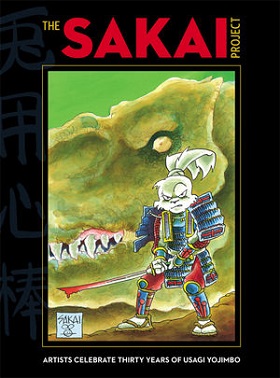 Stan Sakai created his first Usagi Yojimbo story in Steve Gallacci’s Albedo: Anthropomorphics #2 comic book, November 1984. Only 2,000 copies were printed.
Stan Sakai created his first Usagi Yojimbo story in Steve Gallacci’s Albedo: Anthropomorphics #2 comic book, November 1984. Only 2,000 copies were printed.
From there, Usagi Yojimbo has grown to become a very famous comic book, traveling through several publishers, the most recent being Dark Horse Comics since 1996. The comic has always been written and drawn by Stan Sakai. During that time, he has become one of the most popular artists in the professional comic-book community, for his friendliness and readiness to join in numerous benefit projects. When furry fan artist Michael-Scot McMurry was dying of cancer in 2000, he drew the cover for a benefit comic book for McMurry’s expenses for an operation, showing Usagi and McMurry’s Zonie the coyote fighting monsters.
Stan has often been an attendee of furry conventions, sometimes with his wife, Sharon, and their two daughters. I remember one convention, probably a ConFurence in the mid-1990s, where Stan’s daughter Hannah, then about 3 years old, tried to climb up Kjartan Arnörsson, a lean 6'9". Stan was a member of Rowrbrazzle, the furry amateur press association, from 1990 to 1998. He is a member of the Furry Hall of Fame. His Usagi Yojimbo won the Ursa Major Award in the Best Anthropomorphic Comic Book category in every year from 2001 to 2005. He has also won non-furry awards such as the Eisners, a Parent's Choice Award, the Comic-Con's Inkpot, Spain's Haxtur Award and many others. He has been a furry convention guest-of-honor on three continents, at an Anthrocon, a EuroFurence and an Australian MiDFur.
If you have not heard – it has been widely publicized - Stan’s wife Sharon has had an inoperable brain tumor for the past decade. It was mild at first, but has gotten progressively worse until she is now confined to bed and in need of round-the-clock care. The Sakais have medical insurance, but their medical expenses have far exceeded the amount of the insurance. Dark Horse Comics and the Comic Art Professional Society have organized The Sakai Project, this 160-page hardcover book, to both celebrate Usagi Yojimbo’s 30th anniversary and as a benefit project for the Sakais’ medical expenses. All proceeds go to them. Dark Horse is not even reimbursing itself for the printing expenses.
By various, foreword by Mark Evanier, preface by Tone Rodriguez, Milwaukie, OR, Dark Horse Books, July 2014, hardcover $29.99 (160 pages).
Review: 'The Silver Foxes' series by M. R. Anglin
Posted by Fred on Thu 31 Jul 2014 - 03:30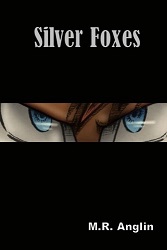 M.R. Anglin’s author’s page on Amazon.com identifies her as a young Jamaican resident of the U.S.
M.R. Anglin’s author’s page on Amazon.com identifies her as a young Jamaican resident of the U.S.
“Fanfiction” has a particular place in her heart since she started by writing fanfics. She enjoys writing YA and middle grade fiction.
She has a different definition of “fanfics” than most other people, since her amateur fiction is all original, without anyone else’s copyrighted characters in it.
She says on FaceBook about Prelude to War:
Even though the main characters are animals, it is meant for an audience of 13+. I'd consider it Christian (or at least inspirational) fantasy fiction.
I assume that means she considers fiction with talking animals as being for young children; e.g., she is not familiar with furry fiction.
Besides these three Silver Foxes novels, she has written Lucas, Guardian of Truth, a Christian fantasy with a human 11-year-old protagonist. Anglin’s first two Silver Foxes books were self-published through Lulu.com. She has recently transferred them to CreateSpace, and finished the third novel.
From Facebook:
This year [2013], I've been working on revising and revamping book 3 in the series for print.
And it is here.
Silver Foxes, by M. R. Anglin, Raleigh, NC, Lulu.com, April 2008, trade paperback $12.00 (134 pages).
Winds of Change, by M. R. Anglin, Raleigh, NC, Lulu.com, June 2009, trade paperback $14.99 (216 pages).
Prelude to War, by M. R. Anglin, Seattle, WA, CreateSpace, October 2013, trade paperback $11.99 (viii + 298 [+ 1] pages), Kindle $2.99.
Review: 'The Mystic Sands', by Alflor Aalto
Posted by Fred on Wed 16 Jul 2014 - 05:50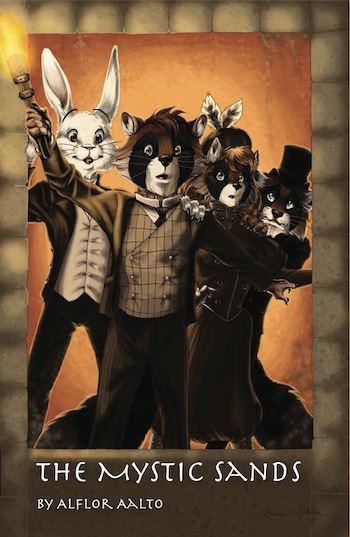 The bad news: The Mystic Sands by Alflor Aalto is a funny animal novel. The characters, all anthropomorphized animals, are interchangeable surrogate humans. There is no reason for any of them to be raccoons, rabbits, foxes, weasels, squirrels, or anything other than humans. They are all human-sized, wear regular human clothes (imagine a human-sized squirrel wearing Victorian clothes), eat human diets, etc. They do occasionally refer to their animal natures:
The bad news: The Mystic Sands by Alflor Aalto is a funny animal novel. The characters, all anthropomorphized animals, are interchangeable surrogate humans. There is no reason for any of them to be raccoons, rabbits, foxes, weasels, squirrels, or anything other than humans. They are all human-sized, wear regular human clothes (imagine a human-sized squirrel wearing Victorian clothes), eat human diets, etc. They do occasionally refer to their animal natures:
And don’t you worry your fluffy ringed tails, my friends. (p. 36)
The good news: The Mystic Sands by Alflor Aalto is a ripping good page-turner, a guaranteed attention-holding light thriller of the 1930s Weird Tales sort with anthropomorphized animals that will have you wanting to finish it in one session. Go buy it!
Las Vegas, NV, Rabbit Valley Comics, May 2013, trade paperback $20.00 (245 pages).
Art With Issues
Posted by Mink on Mon 19 May 2014 - 01:12“Sebastien Millon is an artist. His work is noted for its lack of vision and his art is usually muddled in a turbid stew of crockery.” That’s what the artist says about himself! We don’t think you’ll agree if you visit his web site and see his surreal (to put it mildly) collection of art and comic strips. Funny animals abound… often enough, all over you! Some of his more pithy stuff is also available as prints or on t-shirts. Go play outside more often.
Newly published: Fred Patten's 'Funny Animals and More'
Posted by Fred on Tue 8 Apr 2014 - 06:26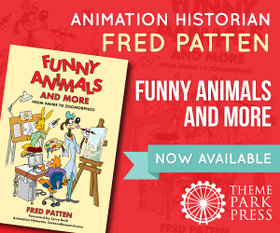 Funny Animals and More: From Anime to Zoomorphics, based on Fred Patten’s weekly columns from Jerry Beck’s Cartoon Research animation website, was published March 26 by Theme Park Press. It is available in paperback and digital formats, and on Amazon.com.
Funny Animals and More: From Anime to Zoomorphics, based on Fred Patten’s weekly columns from Jerry Beck’s Cartoon Research animation website, was published March 26 by Theme Park Press. It is available in paperback and digital formats, and on Amazon.com.
The book is about animation and comic books rather than specifically anthropomorphic animals, but cartoon and CGI funny animals are a major theme. Topics include anime cat girls; Pokémon and Monster Rancher; Astro Boy and Atomcat; how a popular 1970s anime TV series led to the import of thousands of baby North American raccoons into Japan as pets, whose descendants are ruining thousand-year-old Buddhist and Shinto shrines today; animated Summer Olympics mascots like Misha the bear cub, Sam the eagle, Hodori the tiger, and Cobi the sheepdog, from 1972 to 2012; Patten’s favorite childhood comic-book funny animals like Amster the Hamster, Doodles Duck and his nephew Lemuel, Nutsy Squirrel, Dunbar Dodo, and SuperKatt, and how he would still like to see them animated; Crusader Rabbit; rats in animation; Reynard the Fox in animation; and Disney’s forthcoming 2016 Zootopia.
National Film Registry honors anthropomorphic animals
Posted by Fred on Sat 11 Jan 2014 - 08:54Jerry Beck’s Animation Scoop website noted on December 18 that the Library of Congress’ National Film Registry has announced its 2013 selection of twenty-five new additions. Several of the films are animated, or contain animated sequences, and among those, several feature anthropomorphized animals.
Watch Cute Little Animals Die!
Posted by Mink on Wed 20 Nov 2013 - 22:39One of the most talked-about furry phenomena from a decade ago was a silly little series of animated shorts called Happy Tree Friends. Here’s how the distributors describe it: “Happy Tree Friends is the cult cartoon sensation with over 1 billion views. The cartoon is drawn in simple appearance and combines cute forest animals with extreme graphic violence. Each episode revolves around the characters enduring accidental events of bloodshed, pain, dismemberment and/or death.” Got that? Well now Flatiron Entertainment have released Happy Tree Friends: Complete Disaster, a 4-DVD box set which includes 13 half-hour TV episodes and 75 short cartoons. Amazon has it for sale, of course. Ouch!
Review: 'Lab Rat', by B. A. Maddux
Posted by Fred on Thu 31 Oct 2013 - 22:46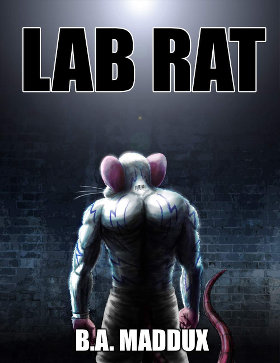 To jump ahead to the bottom line; Lab Rat is mysterious and full of action, and you will like it if you turn off your brain.
To jump ahead to the bottom line; Lab Rat is mysterious and full of action, and you will like it if you turn off your brain.
The narrator, Zack, is a lab rat, grown artificially in a vat. The first few pages of this novel are stream-of-consciousness; his first disjointed thoughts. Two beings look into his tank; Father and Golem.
Father was complaining recently about the limitations of Golem’s tactile sensors, which makes no sense at all to me. But I could tell that he was talking about the flat-voiced speaker.
Golem is mostly black and silver in color.
He checks on me regularly for Father, but doesn’t talk to me like Father does. (page 14)
Zack knows that he is a rat:
My fur is white and does not have any glowing symbols, just a pattern of jagged stripes of a very dark blue. [See E. T. Willoughby's cover.]
I’m not sure, but I do not think Golem has a hairless tail like I do either. Golem is definitely not a rat like me. (page 15)
Legion Publishing, Dec. 2012, hardcover $18.99 (311 pgs.), trade paperback $9.99, Kindle $2.99.

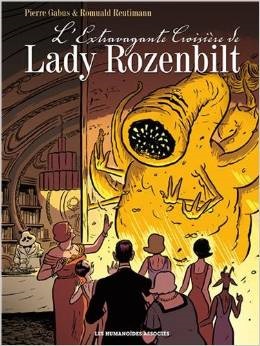 The young Alfred Bigoodee is only an assistant when he embarks on the seaplane of Lady Rozenbilt, the fabulously rich woman with tastes as fantastic as they are dangerous. This voyage will forever change his life.
The young Alfred Bigoodee is only an assistant when he embarks on the seaplane of Lady Rozenbilt, the fabulously rich woman with tastes as fantastic as they are dangerous. This voyage will forever change his life.
